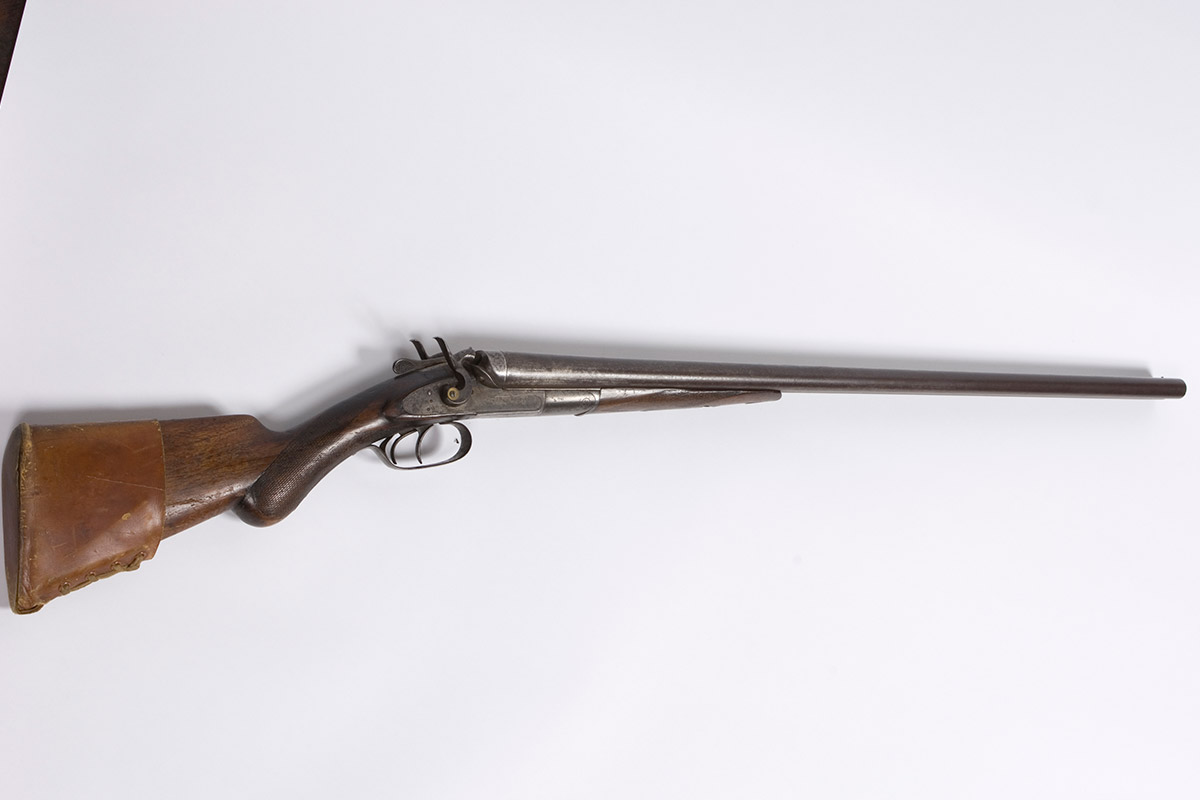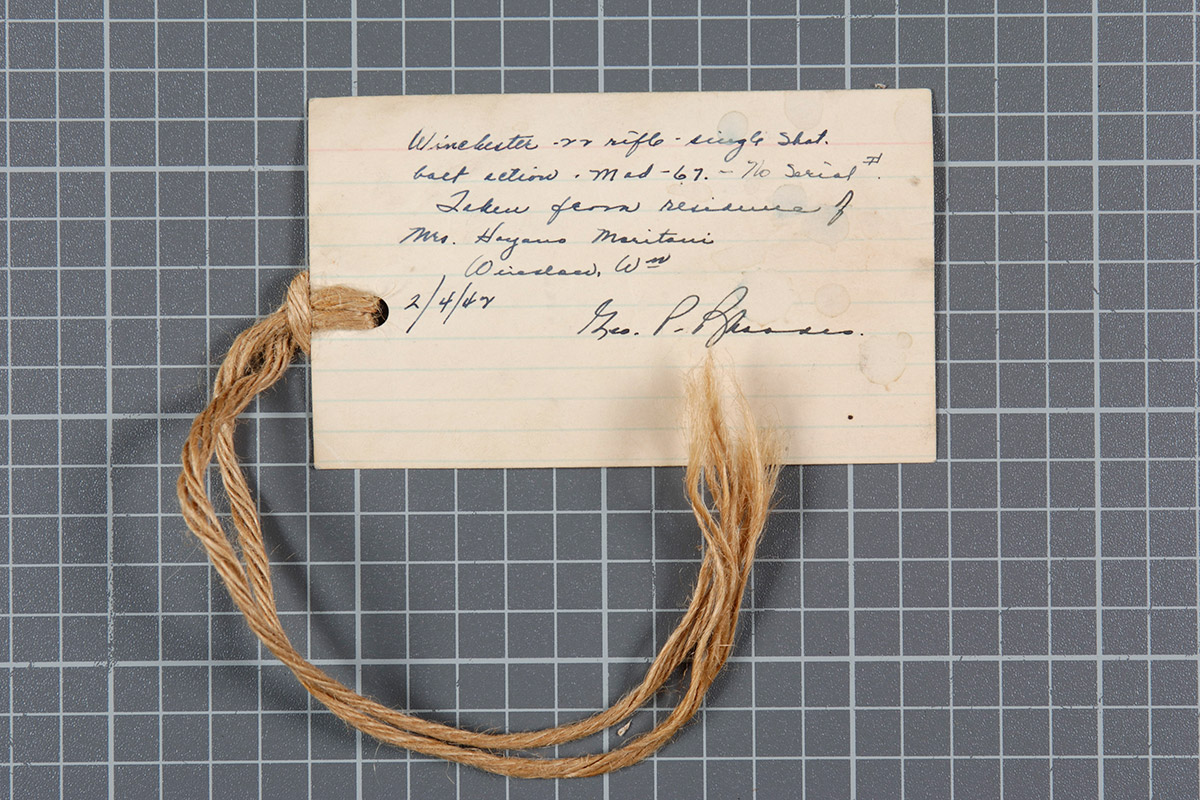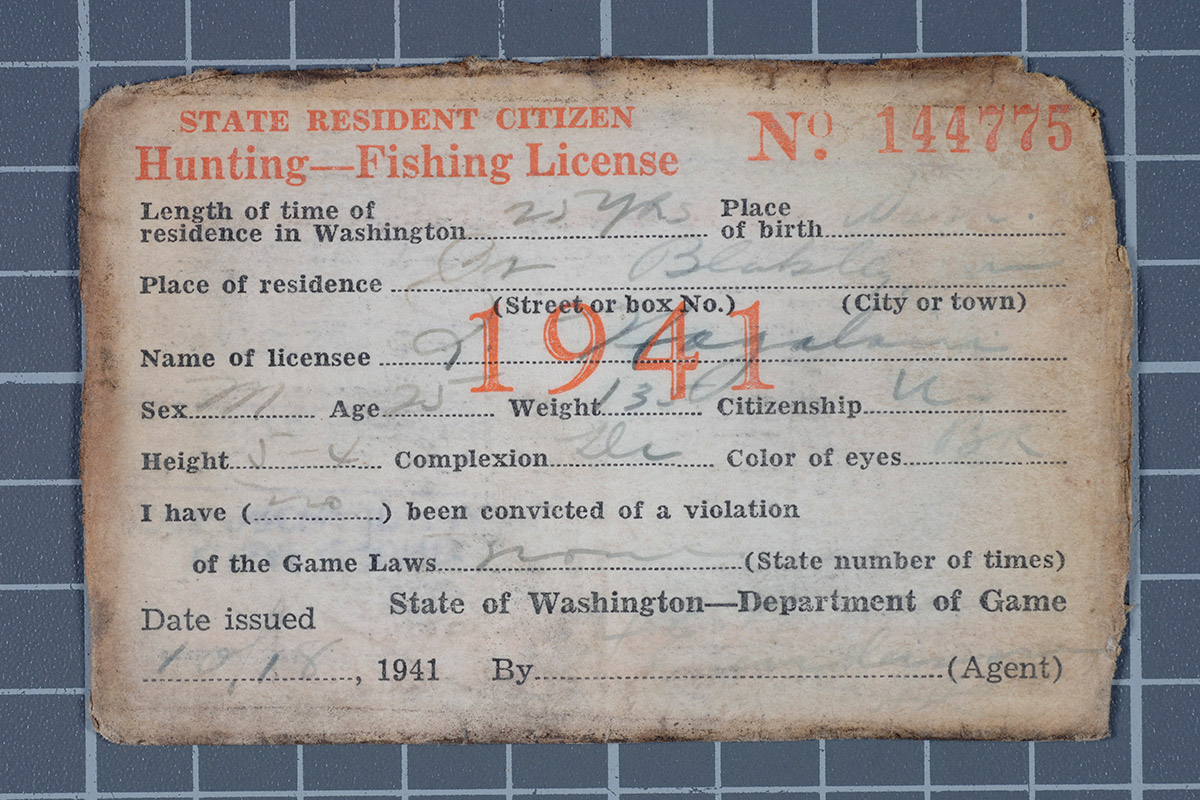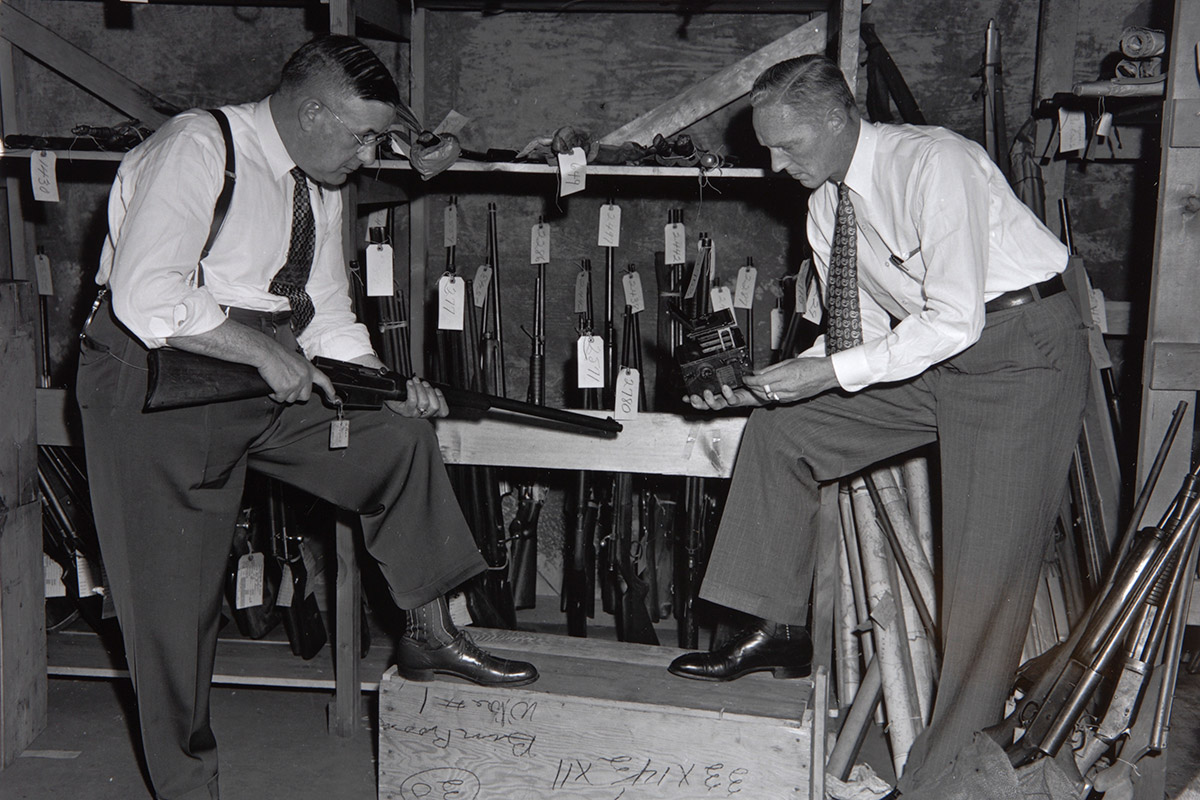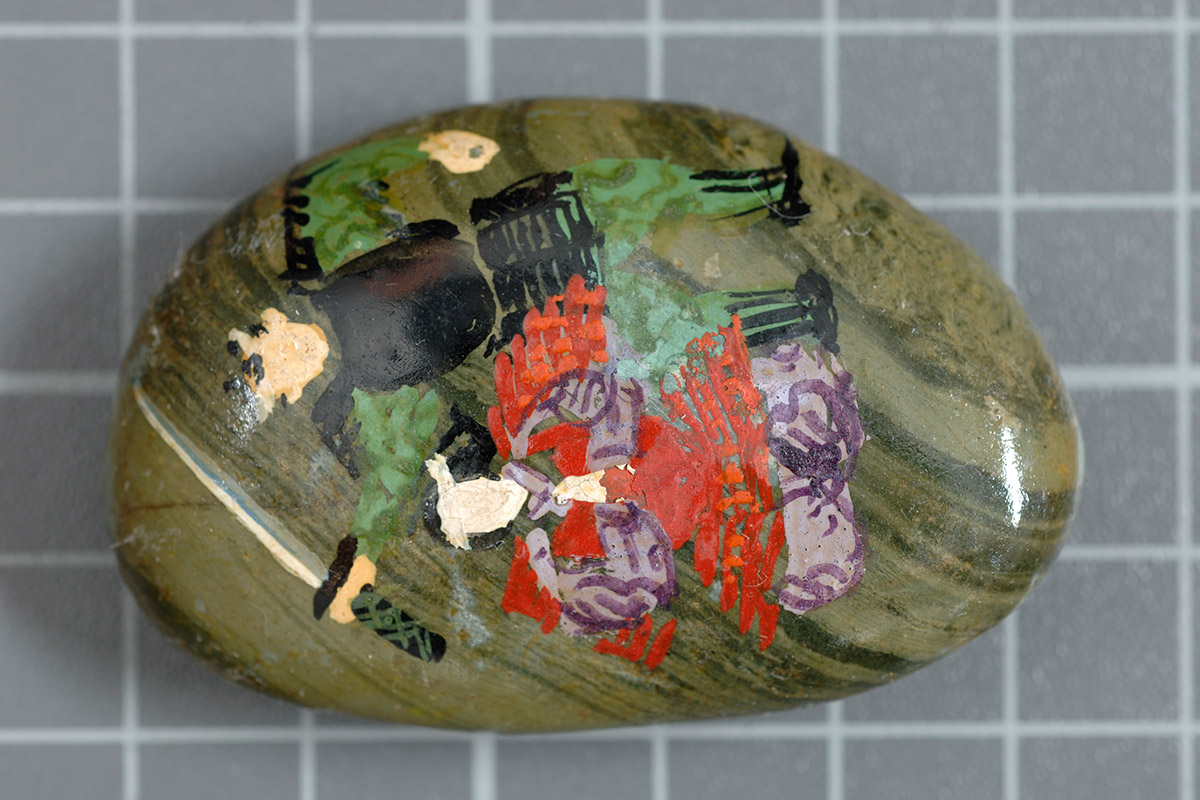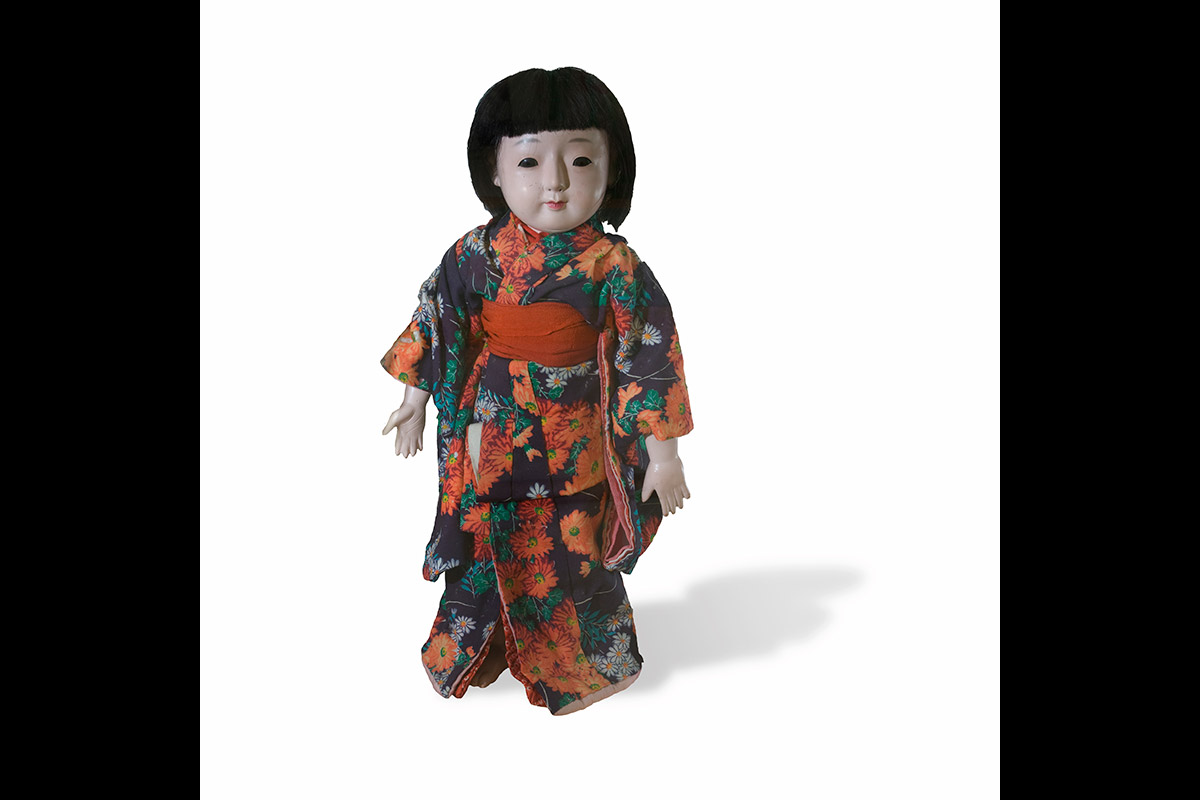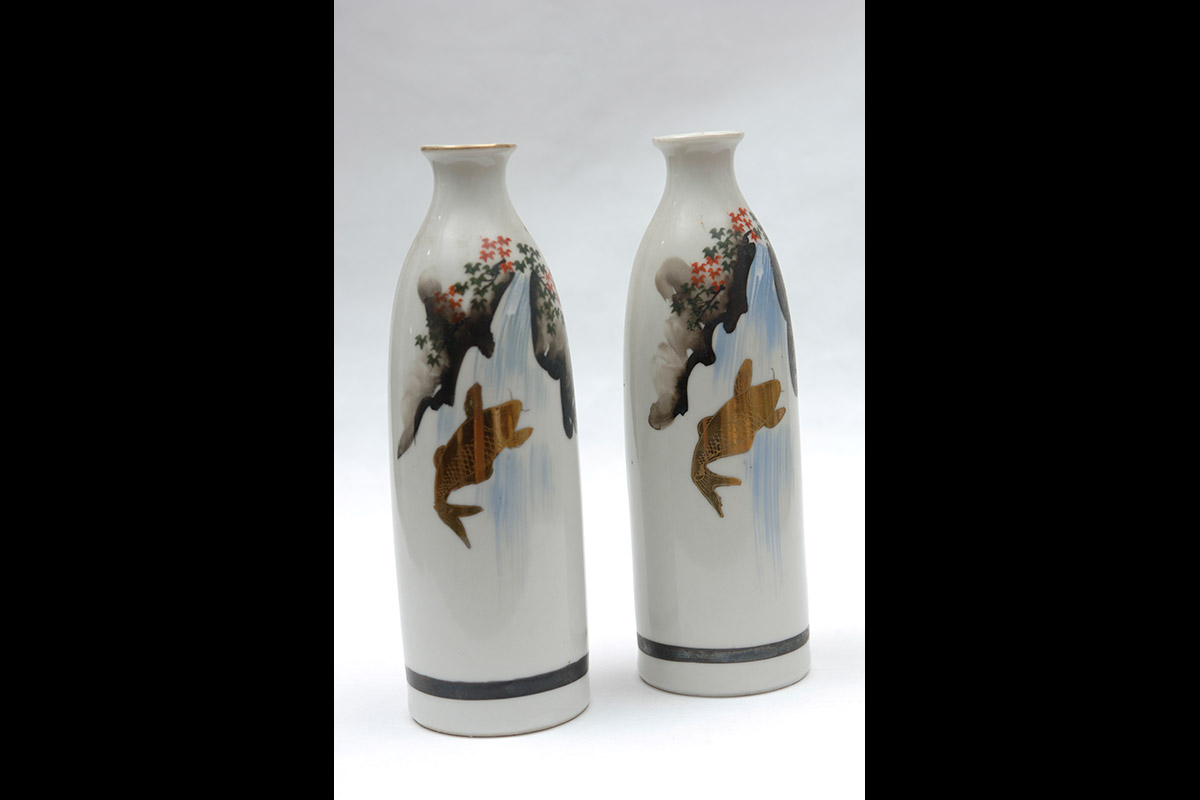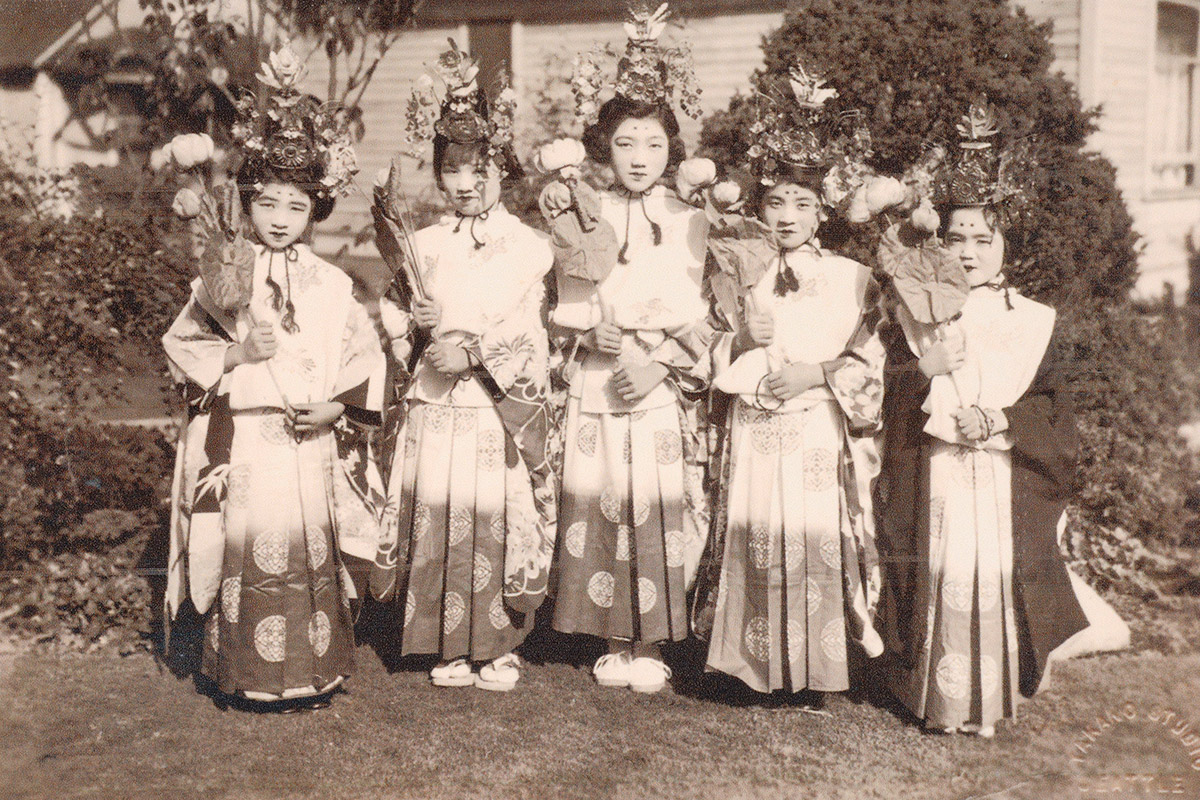
Firearms Confiscated by the FBI
In the week following Pearl Harbor, many West Coast Issei previously identified as "suspect" by the FBI were arrested, questioned, and confined. On February 4, 1942, the FBI, along with Washington State troopers and Kitsap County sheriff deputies, entered and searched every Island Issei home. Contraband such as dynamite and rifles, items which two months earlier would have been described as common farmers' tools, were confiscated and many of their owners taken.
Thirty–four men and one woman were arrested and questioned. Some were returned to their families. Thirteen men were eventually interned as "enemy aliens" in Department of Justice camps, some released only after the end of the war. "They were arresting anybody who was a teacher or leader in the community," said Paul Ohtaki, an Island teenager.
Slideshow
The FBI seized guns, cameras, radios and anything else they deemed contraband and stored them in warehouses. Many of these items were never returned to their owners. Some Nikkei families destroyed or hid cultural items they felt would make them appear loyal to Japan. The Issei men, who were taken into custody and were separated from their families for months and in some cases years, did not talk much about their incarceration. We can only speculate on how difficult it was for them to be away while their wives or eldest children prepared their families for evacuation.
 Owned by the Suyematsu family for shooting game. It was buried during the raids and later dug up after the war. (Credit: Bainbridge Island Historical Society. Digitally photographed by Fenwick Publishing.)
Owned by the Suyematsu family for shooting game. It was buried during the raids and later dug up after the war. (Credit: Bainbridge Island Historical Society. Digitally photographed by Fenwick Publishing.) This tag was put on a hunting rifle seized by the FBI from the Moritani home on Feb 4, 1942. Mrs. Moritani was a widow with three sons. As head of her household she was taken in for questioning by the FBI but was not held in custody.
This tag was put on a hunting rifle seized by the FBI from the Moritani home on Feb 4, 1942. Mrs. Moritani was a widow with three sons. As head of her household she was taken in for questioning by the FBI but was not held in custody. The U.S. Government confiscated firearms used by the Island’s Nisei for hunting.
The U.S. Government confiscated firearms used by the Island’s Nisei for hunting. Firearms and other contraband were tagged and stored in US Government warehouses. (Credit: Museum of History and Industry, Seattle Post-Intelligencer Collection)
Firearms and other contraband were tagged and stored in US Government warehouses. (Credit: Museum of History and Industry, Seattle Post-Intelligencer Collection) Ichiro Hayashida sent this rock to his family while interned in a Department of Justice Camp in Missoula, Montana. One of the other internees decorated this rock.
Ichiro Hayashida sent this rock to his family while interned in a Department of Justice Camp in Missoula, Montana. One of the other internees decorated this rock. Though some Island families destroyed their cultural artifacts many items survived such as this doll, which Kay left stored in a locked room in her family's home while it was rented during the war. It is now on display at Sakai Intermediate School. (Photographed by Fenwick Publishing)
Though some Island families destroyed their cultural artifacts many items survived such as this doll, which Kay left stored in a locked room in her family's home while it was rented during the war. It is now on display at Sakai Intermediate School. (Photographed by Fenwick Publishing) Sake Bottles - These are an example of items that might have been destroyed by families to show they had no loyalties to Japan.
Sake Bottles - These are an example of items that might have been destroyed by families to show they had no loyalties to Japan. Even ornate and delicate items such as these kimonos were destroyed or hidden. Left to right: Tomiko Hayashida, Shimako Nishimori, Michiko Shibayama, Sadako May Terayama, Miki Takayoshi. 1942.
Even ornate and delicate items such as these kimonos were destroyed or hidden. Left to right: Tomiko Hayashida, Shimako Nishimori, Michiko Shibayama, Sadako May Terayama, Miki Takayoshi. 1942.
Oral History
- Father taken, then reunited at end of war - Michi Noritake (OH0001)
- Brother's shotgun - Jerry Nakata (OH0003)
- FBI Roundups - Vic Takemoto (OH0013)
- Father wants to prove loyalty - Yae Yoshihara (OH0034)
- Info on Justice Camps - Frank Kitamoto (OH0042)
- Mother crying - Hisa Matsudaira (OH0048)
- Father prays - Nobi Omoto (OH0052)
- Coming home from school - Tomi Egashira (OH0060)
- FBI in house, visits father in Seattle immigration office - Matsue Watanabe (OH0061)
- Searched home inside and out - Sally Kitano (OH0072)
- War hysteria in newspapers - Mary Woodward (OH0082)
- FBI inspects Omoto home - Sada Omoto (OH0093)
Photo Information: Firearms Confiscated by the FBI — Museum of History and Industry, Seattle Post Intelligencer Collection

